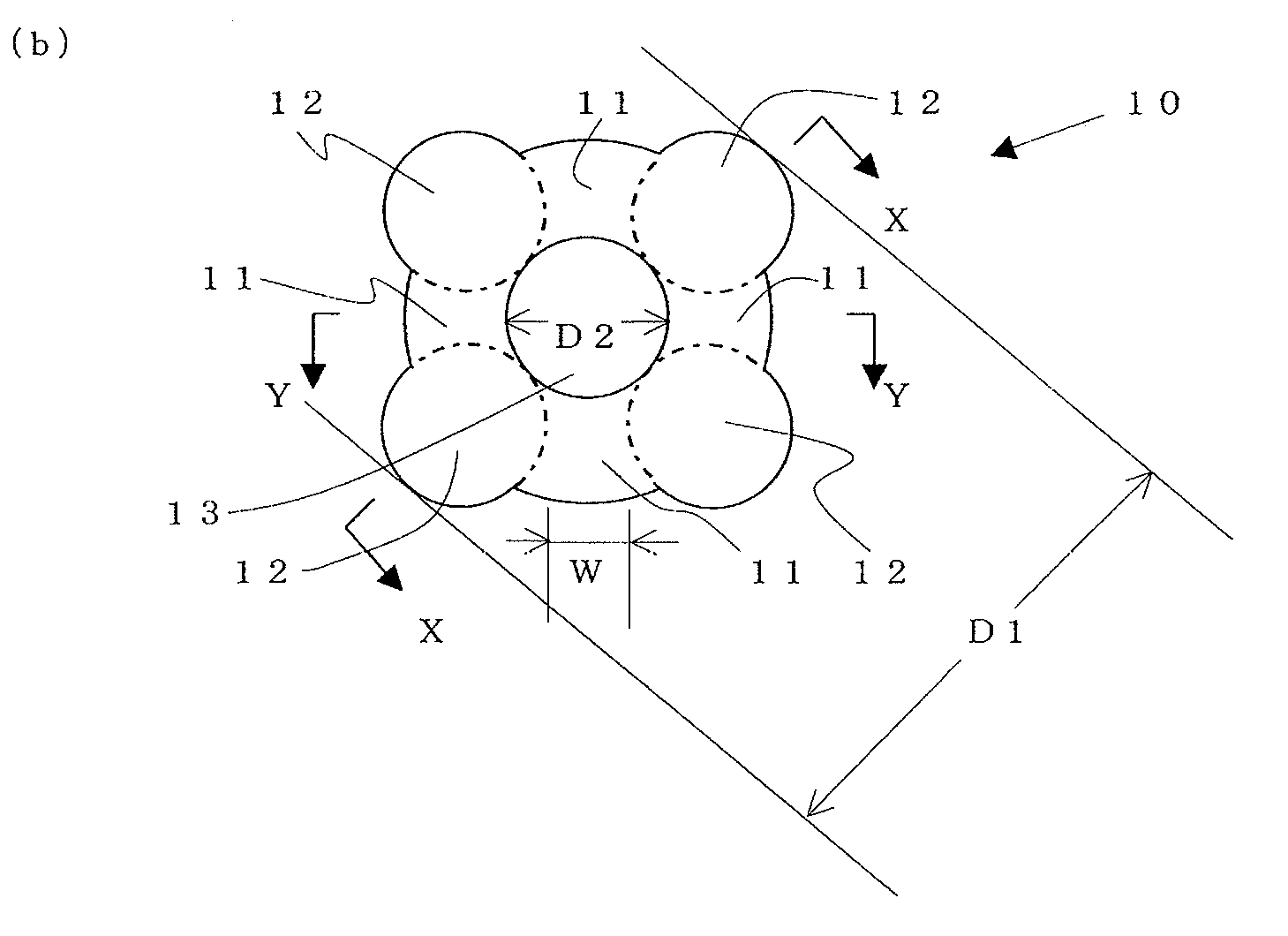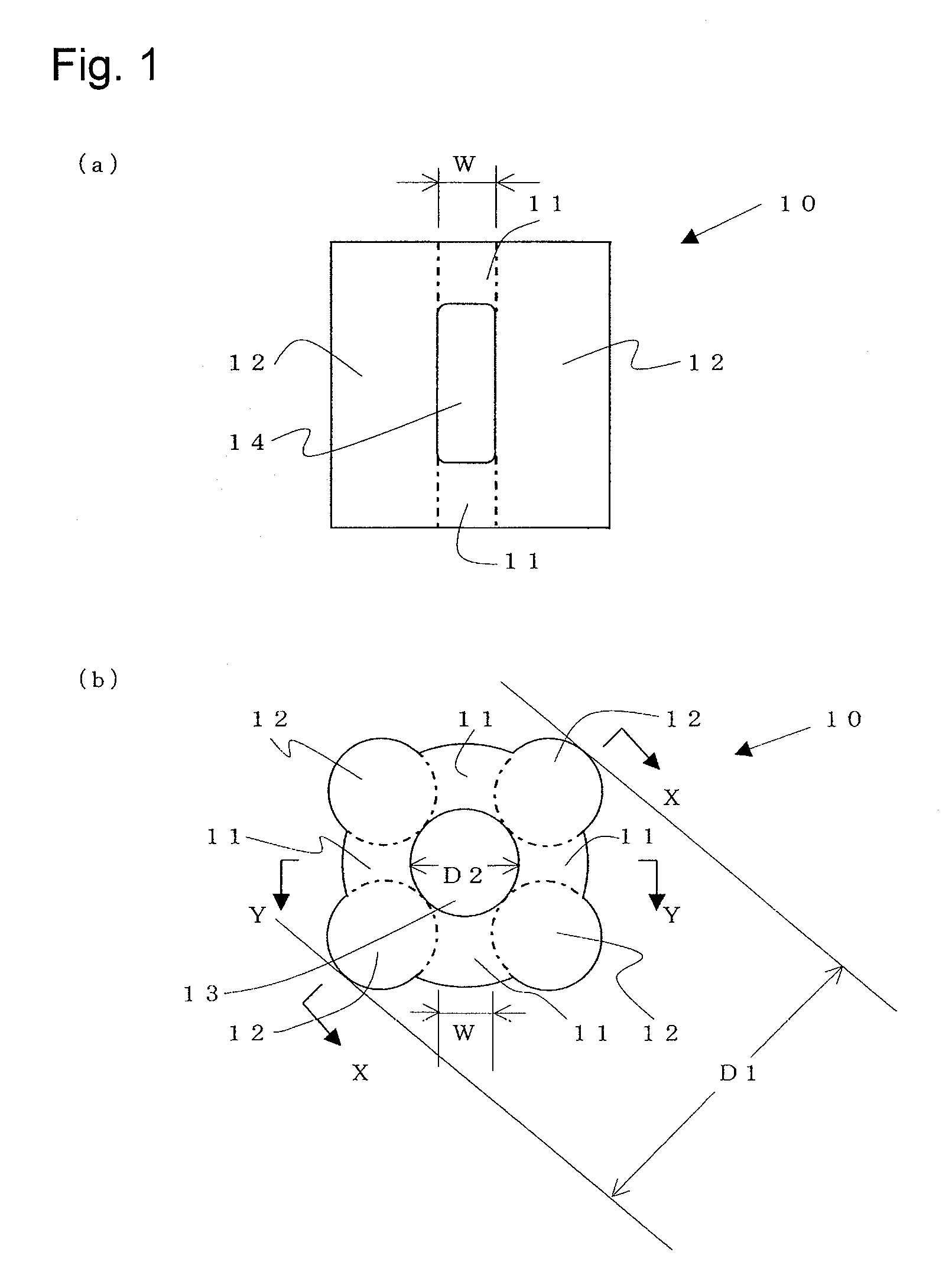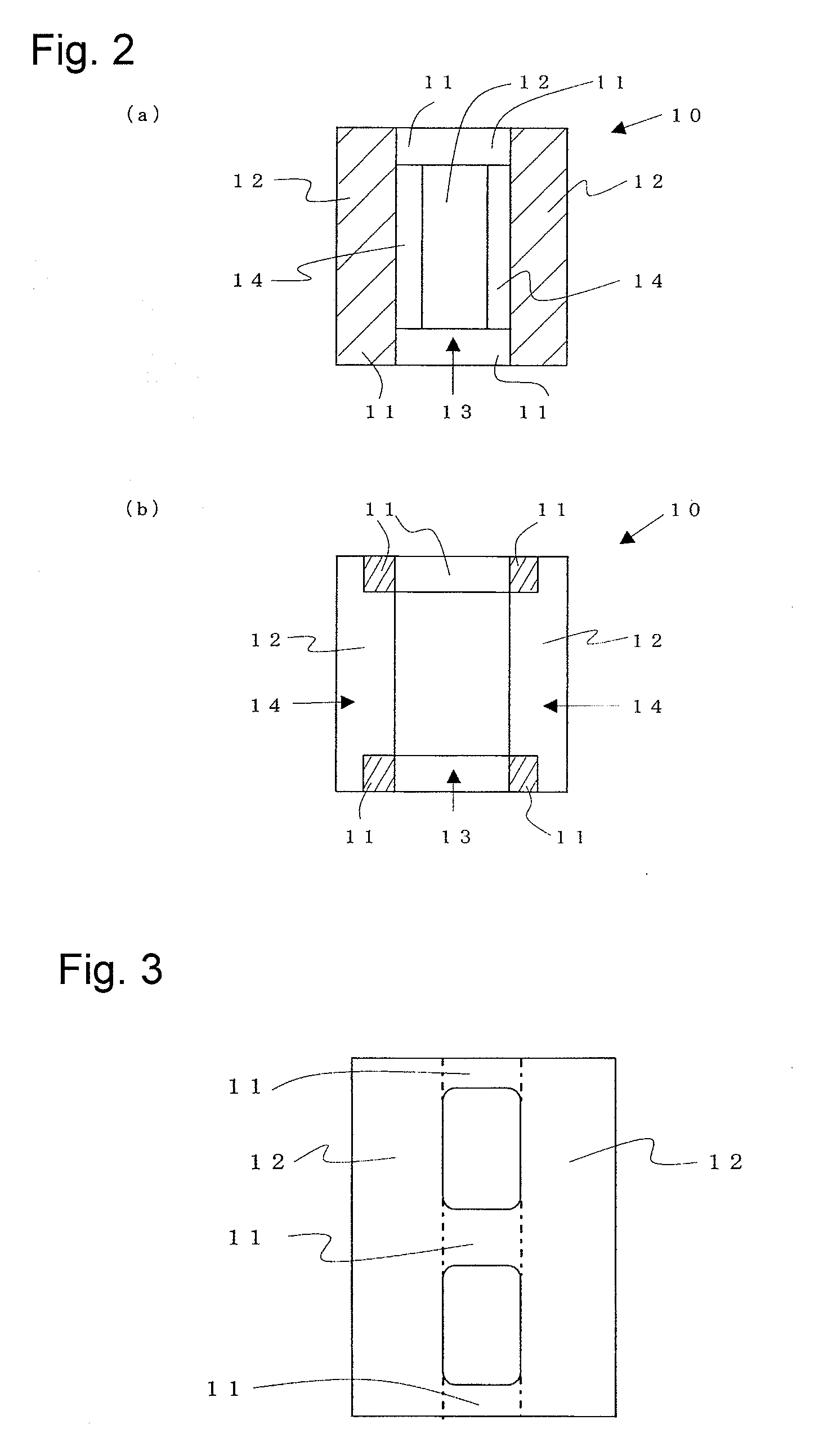Molding and method for producing the same, and catalyst and method for producing the same
a technology of molding and catalyst, applied in the field of molding (or molded objects), can solve the problems of deterioration of the selectivity of the objective product, pressure difference, pressure loss, etc., and achieve the effect of minimizing pressure drop, efficient showing high catalytic performance, and improving molding strength
- Summary
- Abstract
- Description
- Claims
- Application Information
AI Technical Summary
Benefits of technology
Problems solved by technology
Method used
Image
Examples
example 1
[0455]Ammonium molybdate [(NH4)6Mo7O24.4H2O] (13241 g) was dissolved in 15000 g of warm water, and the resultant liquid is designated as liquid A. Iron(III) nitrate [Fe(NO3)3.9H2O] (6060 g), cobalt nitrate [Co(NO3)2.6H2O] (13096 g) and cesium nitrate (CsNO3) (585 g) were dissolved in 6000 g of warm water, then to which bismuth nitrate [Bi(NO3)3.5H2O] (2910 g) was dissolved, and the resultant liquid is designated as liquid B.
[0456]While stirring the liquid A, the liquid B was added thereto so as to obtain a slurry. Subsequently, the slurry was spray-dried to obtain a dried product. A molding material obtained by mixing 100 parts by mass of the resultant dried product with 2.5 parts by mass of antimony trioxide [Sb2O3], 9 parts by mass of a silica-alumina fiber (RFC400-SL, manufactured by Saint-Gobain TM K.K.), 32 parts by mass of pure water and 4 parts by mass of methyl cellulose was kneaded by a kneader to obtain a pasty molding material.
[0457]Using an extrusion molding machine show...
example 2
[0458]Using an extrusion molding machine shown in FIG. 4(b) equipped with dies shown in FIG. 9 (diameter of first die 21′: 6.4 mm, depth of grooves 21′ a: R 1.3 mm, number of grooves 21′ a: 5, outer diameter of second die 22′: 30 mm, inner diameter of second die 22′: 6.4 mm, the depth of grooves 22′ a: R 1.3 mm, number of grooves 22a′: 5), the pasty molding material obtained in Example 1 was supplied into a flow path 25 of the dies, and then extruded at an extrusion rate of 177 mm / min while repeating the operations of rotating the first die 21′ by 144 degrees at a rotational speed of 60 rpm using a motor 23, stopping the die for 1250 msec and rotating the die again by 144 degrees at a rotational speed of 60 rpm, as shown in FIG. 10. The molding obtained immediately after molding was cut into pieces each having a length of 8 to 9 mm by a piano wire to obtain moldings 15 shown in FIG. 8.
example 3
(a) Production of Catalyst for the Production of Methacrolein and Methacrylic Acid
[0461]Ammonium molybdate [(NH4)6Mo7O24.4H2O] (13241 g) was dissolved in 15000 g of warm water and the resultant liquid is designated as a liquid A. Iron(III) nitrate [Fe(NO3)3.9H2O] (6060 g), 13096 g of cobalt nitrate [Co(NO3)2.6H2O] and 585 g of cesium nitrate (CsNO3) were dissolved in 6000 g of warm water, then into which 2910 g of bismuth nitrate [Bi(NO3)3.5H2O] was dissolved, and the resultant liquid is designated as a liquid B.
[0462]While stirring the liquid A, the liquid B was added thereto to obtain a slurry. Subsequently, the slurry was spray-dried to obtain a dried product. A molding material obtained by mixing 100 parts by mass of the resultant dried product with 2.5 parts by mass of antimony trioxide [Sb2O3], 9 parts by mass of a silica-alumina fiber (RFC400-SL, manufactured by Saint-Gobain TM K.K.), 32 parts by mass of pure water and 4 parts by mass of methyl cellulose was kneaded by a knea...
PUM
| Property | Measurement | Unit |
|---|---|---|
| temperature | aaaaa | aaaaa |
| temperature | aaaaa | aaaaa |
| pore radius | aaaaa | aaaaa |
Abstract
Description
Claims
Application Information
 Login to View More
Login to View More - R&D
- Intellectual Property
- Life Sciences
- Materials
- Tech Scout
- Unparalleled Data Quality
- Higher Quality Content
- 60% Fewer Hallucinations
Browse by: Latest US Patents, China's latest patents, Technical Efficacy Thesaurus, Application Domain, Technology Topic, Popular Technical Reports.
© 2025 PatSnap. All rights reserved.Legal|Privacy policy|Modern Slavery Act Transparency Statement|Sitemap|About US| Contact US: help@patsnap.com



